Yenisey
![[Jenisej]](img/balt/jenisejr.gif) Yenisey was
a 90 m long Russian mine-layer ship, launched in 1910. On June 4, 1915, she was torpedoed by the
German submarine U-26 off the Estonian coast, which at that time was Russian territory. The ship sank
quickly in the cold water with 297 men. Only 21 survived. Yenisey also had a sister ship named Amur,
a model of which is on display at the Maritime museum in St Petersburg. The submarine U-26 was itself
sunk a couple of months later, when it struck a mine. Yenisey was
a 90 m long Russian mine-layer ship, launched in 1910. On June 4, 1915, she was torpedoed by the
German submarine U-26 off the Estonian coast, which at that time was Russian territory. The ship sank
quickly in the cold water with 297 men. Only 21 survived. Yenisey also had a sister ship named Amur,
a model of which is on display at the Maritime museum in St Petersburg. The submarine U-26 was itself
sunk a couple of months later, when it struck a mine.
 The
very well preserved wreck is now laying on 47 m depth. The visibility is mostly between 5 and 10
metres. It is totally dark and you need a good lamp. The wreck is laying with a 35-40 degrees list on
starboard side, because of its deep V shaped keel. The
very well preserved wreck is now laying on 47 m depth. The visibility is mostly between 5 and 10
metres. It is totally dark and you need a good lamp. The wreck is laying with a 35-40 degrees list on
starboard side, because of its deep V shaped keel.
It is partially covered with old fishing trawls laying on deck or hanging between sticking up
parts. In the cabins, floors are covered by a 40 cm layer of silt, that has accumulated during the
decades.
The position has always been known by fishermen as a net snag, but was only possible to scuba dive
on the site after the fall of the Soviet Union. In 1993, I participated when Estonian and Swedish
divers brought up a few objects for the Estonian Maritime Museum. Examples
are:
- A clock (photo 2) where rust stains from the hands still point at 20 past 10.
According to the German log, she was sunk at 08:27. But that was German time, and Russian time was
10:27. Thus we can assume that this clock shows the time of the sinking.
- The binnacle, i.e. compass housing (photo 3).
- Some machine gun ammo, still intact in its cotton fabric bands, and an entire, slightly rusty
Maxim machine gun.
- The emergency steering wheel console, with rudder indicator
from stern deck, unfortunately with broken steering wheel, maybe by fishing trawl or net.
Altogether, only a few objects were taken up for the Maritime museum. All objects were placed in
water buckets or kept wrapped in wet blankets until the return to the conservation department in
Tallinn.
Some very nice photos were taken from inside the steering house on the bridge, showing the
steering wheel and machine telegraph (photo 4 and 5).
N.B. Diving on this site is forbidden for recreational divers. This document is presented to show
the potential of underwater archaeology in the Baltic Sea.
This is an extract from the 1993 Estonian expedition diary.
The archive photo is from the Estonian Maritime Museum, underwater photos by Curt Östman and deck
photos by myself.
by Per Åkesson 1996, updated Feb '97
Related links
The Baltic Operations 1914-1916
|
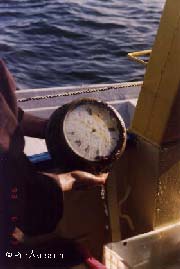
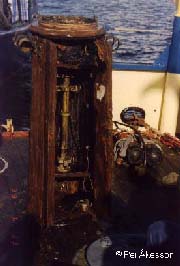
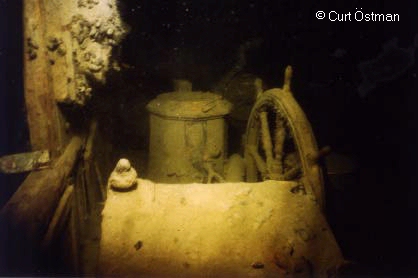
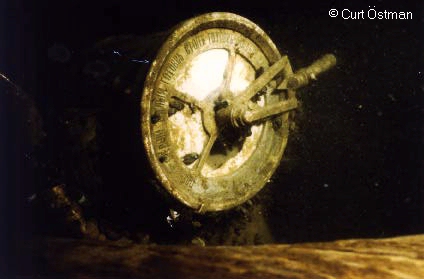
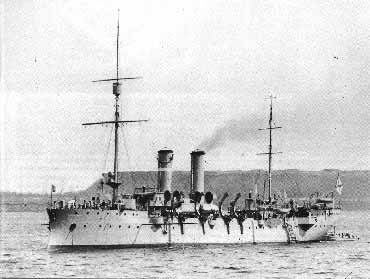
 Back to Nordic Underwater Archaeology
Back to Nordic Underwater Archaeology